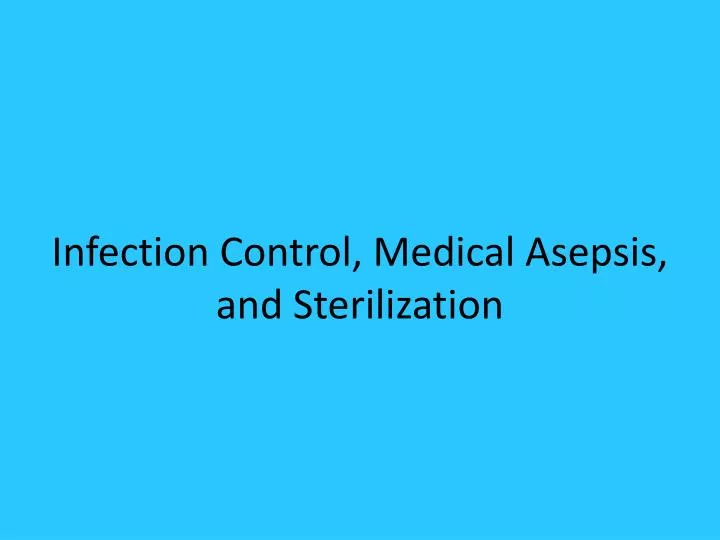

- #Principles of medical and surgical asepsis how to#
- #Principles of medical and surgical asepsis skin#
- #Principles of medical and surgical asepsis free#
Whenever the sterility of an object is questionable, consider it non-sterile.įluid flows in the direction of gravity. Sterile objects must only be touched by sterile equipment or sterile gloves. A sterile object becomes non-sterile when touched by a non-sterile object. All objects used in a sterile field must be sterile.Ĭommercially packaged sterile supplies are marked as sterile other packaging will be identified as sterile according to agency policy.Ĭheck packages for sterility by assessing intactness, dryness, and expiry date prior to use.Īny torn, previously opened, or wet packaging, or packaging that has been dropped on the floor, is considered non-sterile and may not be used in the sterile field.Ģ. Preventing and reducing SSI are the most important reasons for using sterile technique during invasive procedures and surgeries.ġ. SSI is defined as an “infection that occurs after surgery in the area of surgery” (CDC, 2010, p. Sterile technique is essential to help prevent surgical site infections (SSI), an unintended and oftentimes preventable complication arising from surgery. Sterile technique may include the use of sterile equipment, sterile gowns, and gloves (Perry et al., 2014).
#Principles of medical and surgical asepsis skin#
In health care, sterile technique is always used when the integrity of the skin is accessed, impaired, or broken (e.g., burns or surgical incisions). It is also used when performing a sterile procedure at the bedside, such as inserting devices into sterile areas of the body or cavities (e.g., insertion of chest tube, central venous line, or indwelling urinary catheter).

Sterile technique is most commonly practised in operating rooms, labour and delivery rooms, and special procedures or diagnostic areas. Principles of sterile technique help control and prevent infection, prevent the transmission of all microorganisms in a given area, and include all techniques that are practised to maintain sterility. In the literature, surgical asepsis and sterile technique are commonly used interchangeably, but they mean different things (Kennedy, 2013).
#Principles of medical and surgical asepsis free#
Sterile technique is a set of specific practices and procedures performed to make equipment and areas free from all microorganisms and to maintain that sterility (BC Centre for Disease Control, 2010). Surgical asepsis is the absence of all microorganisms within any type of invasive procedure.
#Principles of medical and surgical asepsis how to#
Rather we should learn how to translate sterility tests in terms of the real world infections hazards.\)Īsepsis refers to the absence of infectious material or infection. However, we do not really need a universal definition of sterility. The field of surgical sterilization and surgical safety is less confused by technical inconsistencies than it is by semantic nightmares, such that we will never reach a universal definition of sterility.

As in many marriages, the partners made unwarranted demands upon each other, and became frustrated when these demands were unfulfilled. In general, the marriage between the surgeons and the sterilizers was a successful one the major handicap to eternal bliss and harmony, however, was an incompatibility between the partners. The basic principles of antisepsis and prevention of wound suppuration, including the destruction of germs on instruments, dressings, the hands of the surgeon and his assistants, and everything else in contact with the wound were clearly elucidated by Lister in the 1870s and remain the inviolate principles of surgical asepsis today. Also in the 1800s, the beginnings of thermal sterilization were being developed in the food industry. Surgery came first, fully 600 years before the principles of asepsis and anesthesia were even introduced in the middle of the 1800s. The history of sterilization was not linked from the first with surgery.


 0 kommentar(er)
0 kommentar(er)
